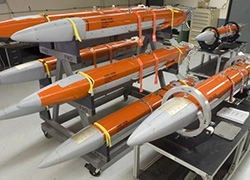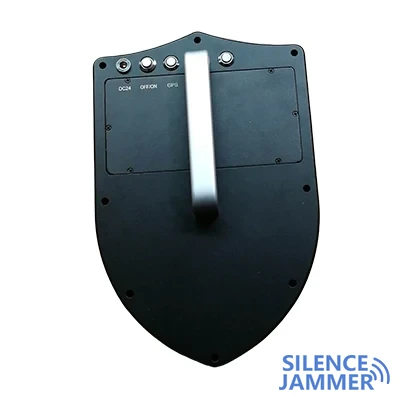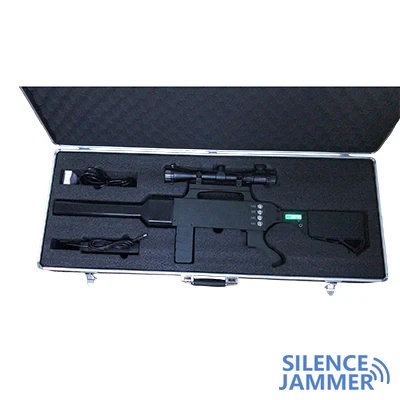With the rapid development of modern warfare technology, electronic warfare has become a key area for the military of various countries to compete for battlefield advantages. Especially when facing complex enemy air defense systems, the effectiveness of traditional weapons is often limited, which has prompted countries to develop new technical means for effective confrontation.
Cyber decoys, such as MALD-X and MALD-N, also as signal jammer device can not only attract enemy firepower, but also effectively shield and interfere with enemy electronic signals, thereby providing better protection for US military combat platforms.
Tactical value of MALD-X signal jammer blockers
The collaborative micro air-launched decoy (MALD-X) planned to be deployed by the US Navy is a representative of this new electronic warfare technology. The system was originally developed by Raytheon to provide a consumable decoy tool for US Air Force and Navy combat platforms to confuse enemy radar and air defense systems. In cooperation with the Pentagon's Strategic Capabilities Office, MALD-X not only retains the original decoy function, but also undergoes electronic warfare upgrades, allowing it to share information with other combat units through data links and reorganize tasks.

A significant advantage of MALD-X is that it can operate in the form of a "swarm" and confront enemy air defense systems through collaboration. This networked combat method makes the decoy no longer a simple individual, but can flexibly respond to enemy radar and signal interception by sharing data and mission instructions. At the same time, MALD-X can replan the path during the mission and adjust the strategy based on real-time data, thereby maintaining an advantage in a complex and changing battlefield environment.
The features of ADM-160 MALD (Micro Air-Launched Decoy) are as follows:
- Flexible modular system: It can effectively deceive the enemy's integrated air defense system (IADS) and disguise itself as a US or allied aircraft.
- Air-Launched Decoy: It is used to protect aircraft and pilots, and confuses the enemy's air defense system by launching decoy formations, reducing the risk of real aircraft being hit.
- Lightweight design: It weighs less than 300 pounds and has the advantage of flexible deployment.
- Long-range combat capability: With a range of about 500 nautical miles (575 statute miles), it can perform missions deep into enemy airspace.
- Automatic mission execution: After being launched from the host aircraft, MALD will execute the mission according to the pre-set program.
- Anti-air warfare capability: It can suppress enemy air defense systems and provide protection for US and allied pilots.
Synergy between signal jammers and electronic warfare
Signal jammer blockers are another key component in electronic warfare. On the modern battlefield, both the enemy and us rely heavily on radio communications, radar signals, and GPS navigation systems, which makes signal blocking one of the key means to influence the outcome of the war. The MALD-X system can not only serve as a decoy, but also as a signal jammer blocker, interfering with the enemy's signal link to cut off the key data source of its radar or missile guidance system.
MALD-X uses advanced electronic jamming technology, which can identify and lock the enemy's communication signals in a very short time, and then send out targeted jamming signals. This jamming mechanism is very similar to the function of signal jammer devices, both of which disrupt the enemy's communication or control chain to weaken its combat capability. In addition, MALD-X can also cooperate with other signal jammers to attack the enemy's electronic warfare system from multiple angles to ensure the concealment and security of its own combat platform.
Future deployment and strategic considerations of the US Navy
According to the plan, the US Navy will further upgrade the MALD-X system to add networked electronic warfare functions to adapt it to the complex combat environment in the future. In addition to the basic signal jamming function, the modular design of MALD-X also allows it to carry different mission payloads to meet different battlefield requirements. In the future, the US military will not only deploy this system on platforms such as the Super Hornet and Growler E/A-18G, but also plan to apply it to a wider range of combat platforms, including drones and ship-borne missile systems.
The potential of the MALD-X system lies not only in its advanced electronic warfare capabilities, but also in its ability to save military resource costs. Compared with traditional electronic warfare equipment, MALD-X is small in size, light in weight, easy to carry and deploy. It weighs less than 300 pounds and has a range of 500 nautical miles, which enables it to play an important role in long-range operations. At the same time, as a disposable consumable, it can be mass-produced and deployed, greatly improving the flexibility of the military to deal with enemy air defense systems.

The U.S. Navy also plans to further develop MALD-X and convert it into a device that can better cope with GPS interference environments. As the enemy's ability to use signal jammers increases, the U.S. military must have anti-interference capabilities to ensure that communications and navigation can remain unimpeded in complex battlefield environments. The enhanced MALD-J is the result of this effort. It uses an improved GPS/INS navigation system, which enables it to maintain better positioning capabilities in GPS-denied environments to ensure mission success.
Signal Jammer blockers and Future Battlefield Outlook
As technology continues to advance, signal jamming devices and network decoys will become important components on future battlefields. The U.S. Navy plans to gradually improve its competitiveness in the field of electronic warfare by deploying MALD-X and MALD-N systems. This not only provides the U.S. military with new tools to deal with complex electronic warfare environments, but also lays the foundation for future arms competition.
The future development direction of signal jammer blockers will not only be limited to interfering with enemy communications, but will also involve the control and attack of a wider range of electronic signals. Whether it is used to counter missile defense systems or to interfere with drones and radars, signal blockers will play an indispensable role in future wars.




